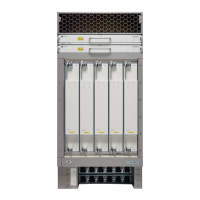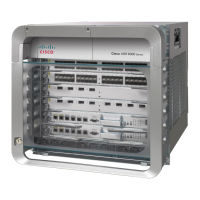PurposeCommand or Action
Configures a tunnel and enters interface configuration
mode.
interface tunnel number
Example:
Router(config)# interface tunnel 100
Step 5
Enables MPLS point-to-multipoint traffic engineering on
the tunnel.
tunnel mode mpls traffic-eng point-to-multipoint
Example:
Router(config-if)# tunnel mode mpls traffic-eng
point-to-multipoint
Step 6
Specifies a destination list to specify the IP addresses of
point-to-multipoint destinations.
tunnel destination list mpls traffic-eng
{identifierdest-list-id|namedest-list-name}
Example:
Router(config-if)# tunnel destination list mpls
traffic-eng name in-list-01
Step 7
Configures static group membership entries on an interface.
ip igmp static-group {* | group-address
[source{source-address| ssm-map}] |
class-mapclass-map-name}
Step 8
•
Configure this on the TE tunnel interface if the
source address (S, G) cannot be resolved.
Example:
Router(config-if)# ip igmp static-group
239.100.100.101 source 10.11.11.11
Enables Protocol Independent Multicast (PIM) on an
interface.
ip pim {dense-mode [proxy-register {listaccess-list |
route-mapmap-name}] | passive | sparse-mode|
sparse-dense-mode}
Step 9
•
An interface configured with passive mode does not
pass or forward PIM control plane traffic; it passes
or forwards only IGMP traffic.
Example:
Router(config-if)# ip pim passive
Exits interface configuration mode.exit
Example:
Router(config-if)# exit
Step 10
Creates a destination list and enters traffic engineering
destination list configuration mode.
mpls traffic-eng destination list {namedest-list-name
| identifierdest-list-id}
Example:
Router(config)# mpls traffic-eng destination list
name in-list-01
Step 11
MPLS Traffic Engineering Path Calculation and Setup Configuration Guide, Cisco IOS XE Release 3S (Cisco ASR
920 Series)
23
MPLS Point-to-Multipoint Traffic Engineering
Configuring the Headend Routers

